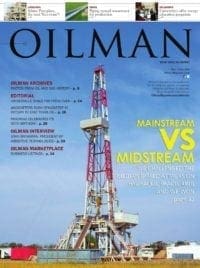The Texas Railroad Commission apparently isn’t shaken up by Ohio regulators’ decision to limit hydraulic fracturing after finding the process may have touched off minor earthquakes in the Buckeye State.
The Ohio Department of Natural Resources last week announced it’s tightening permit rules on fracking in direct response to tremors in Mahoning County, citing “a probable connection” to fracking near a small, previously unknown fault. The quakes included one that shook homes near a Hilcorp Energy Co. drilling site.
But Officials with the Texas Railroad Commission, which has regulatory oversight of oil-and-gas drilling in Texas, say they have not found a link between fracking and tremblers, adding that geology differs between states.
“The Commission bases its regulation on science and facts, and at this time staff have no information or science that warrants limits to drilling or hydraulic fracturing in Texas,” spokeswoman Ramona Nye said via email. “Specifically, Railroad Commission staff has not identified a definitive correlation between seismic activity (or earthquakes) and injection wells in Texas or between seismic activity and hydraulic fracturing in Texas.”
Nonetheless, TRC two weeks ago hired seismologist David Craig Pearson, a former team leader for a Los Alamos National Laboratory seismic, experimental field team, to look into the potential seismic impact of oil-and-gas activity in the state.
Environmental activists have long argued that hydraulic fracturing, or fracking — the process used to release oil from dense shale formations — may cause earthquakes. They also maintain that injection wells used for disposal of wastewater used in the process could trigger seismic shifts.
The Texas Railroad Commission apparently isn’t shaken up by Ohio regulators’ decision to limit hydraulic fracturing after finding the process may have touched off minor earthquakes in the Buckeye State.
The Ohio Department of Natural Resources last week announced it’s tightening permit rules on fracking in direct response to tremors in Mahoning County, citing “a probable connection” to fracking near a small, previously unknown fault. The quakes included one that shook homes near a Hilcorp Energy Co. drilling site.
But Officials with the Texas Railroad Commission, which has regulatory oversight of oil-and-gas drilling in Texas, say they have not found a link between fracking and tremblers, adding that geology differs between states.
“The Commission bases its regulation on science and facts, and at this time staff have no information or science that warrants limits to drilling or hydraulic fracturing in Texas,” spokeswoman Ramona Nye said via email. “Specifically, Railroad Commission staff has not identified a definitive correlation between seismic activity (or earthquakes) and injection wells in Texas or between seismic activity and hydraulic fracturing in Texas.”
Nonetheless, TRC two weeks ago hired seismologist David Craig Pearson, a former team leader for a Los Alamos National Laboratory seismic, experimental field team, to look into the potential seismic impact of oil-and-gas activity in the state.
Environmental activists have long argued that hydraulic fracturing, or fracking — the process used to release oil from dense shale formations — may cause earthquakes. They also maintain that injection wells used for disposal of wastewater used in the process could trigger seismic shifts.






